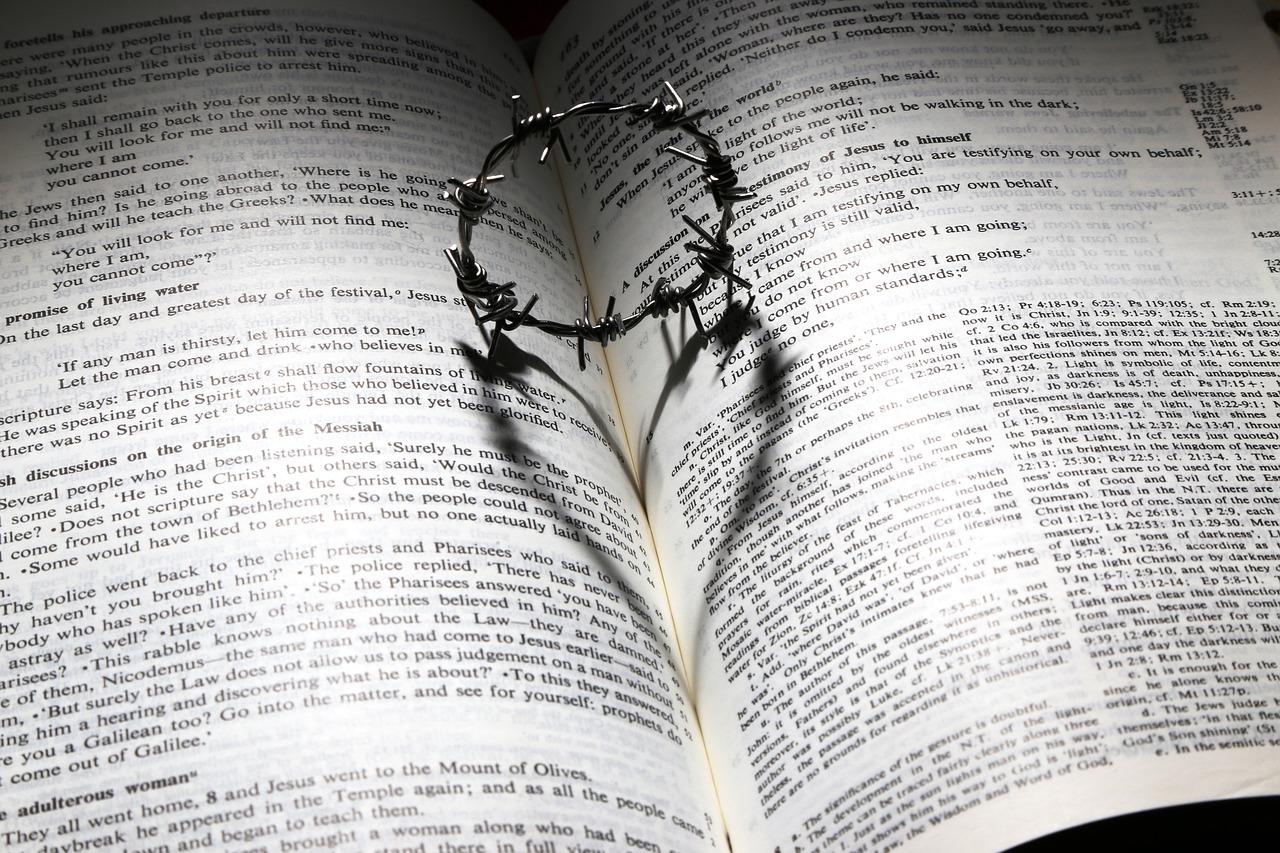“The next day John seeth Jesus coming unto him, and saith, Behold the Lamb of God, which taketh away the sin of the world. This is he of whom I said, after me cometh a man which is preferred before me: for he was before me,” (John 1:29).
This is the first passage in the New Testament to describe Jesus, the Christ, as the Lamb of God. The next one comes in Verse 35, “Again the next day after John stood, and two of his disciples; 36 And looking upon Jesus as he walked, he saith, Behold the Lamb of God!”
Throughout the New Testament, Jesus is portrayed as the Lamb of God. For example, in I Peter 1-18-19, “Knowing that you were not redeemed with corruptible things, like silver or gold, from your aimless conduct received by tradition from your fathers, but with the precious blood of Christ, as of a lamb without blemish and without spot.”
In Rev. 6:15, the portrayal is so vivid and meaningful, “And the kings of the earth, the great men, the rich men, the commanders, the mighty men, every slave and every free man, hid themselves in the caves and in the rocks of the mountains, and said to the mountains and rocks, Fall on us and hide us from the face of Him who sits on the throne and from the wrath of the Lamb! For the great day of His wrath has come, and who is able to stand?” And again in Rev. 13: 8, “All who dwell on the earth will worship him, whose names have not been written in the Book of Life of the Lamb slain from the foundation of the world.”
The very first time in the Bible we begin to see a link between Jesus and a Lamb is in the declaration for the Passover in Exodus 12.3. Speak to all the congregation of Israel, saying: “On the tenth of this month every man shall take for himself a lamb, according to the house of his father, a lamb for a household. Verse 5 -6, “Your lamb shall be without blemish, a male of the first year. You may take it from the sheep or from the goats. Now you shall keep it until the fourteenth day of the same month. Then the whole assembly of the congregation of Israel shall kill it at twilight.”
For many years, after leaving Egypt, Israel kept the Passover and God’s other appointed times or festivals, with the imagery of the Passover and the lamb significant in worship, meaning, and the future implications for God’s plan for humanity.
Later, it was the prophet Isaiah who made this prophetic statement in Chapter 53.6. “All we like sheep have gone astray; we have turned every one to his own way; and the Lord hath laid on him the iniquity of us all. 7 He was oppressed, and he was afflicted, yet he opened not his mouth: he is brought as a lamb to the slaughter, and as a sheep before her shearers is dumb, so he openeth not his mouth. 8 He was taken from prison and from judgment: and who shall declare his generation? for he was cut off out of the land of the living: for the transgression of my people was he stricken. 9 And he made his grave with the wicked, and with the rich in his death; because he had done no violence, neither was any deceit in his mouth.”
The lamb being brought to the slaughter is an often used phrase in Leviticus when it comes to sin offering, although other animals were used as well. However, what we see in Hebrews and other N.T. books is how Christ’s sacrifice for the sins of humanity replaces all animal sacrifices in the O.T., thus making him fit for title, The Lamb of God.
Hebrews 9: 24, “For Christ is not entered into the holy places made with hands, which are the figures of the true; but into heaven itself, now to appear in the presence of God for us: 25 Nor yet that he should offer himself often, as the high priest entereth into the holy place every year with blood of others; 26 For then must he often have suffered since the foundation of the world: but now once in the end of the world hath he appeared to put away sin by the sacrifice of himself.”
When we see the Lamb in the New Testament, it represents Christ as both suffering and triumphant. It also symbolizes gentleness, innocence, purity, meekness, and forgiveness. When seen with the lion, the Lamb means a time yet future when His everlasting Kingdom rules the earth with Jesus as King of Kings and Lords of Lords. Indeed, He’s also referred to in Rev 5 as the Conquering Lion of the Tribe of Judah.
In 1 Cor. 5:7, we see Jesus being described as “our Passover,” not our Easter. Why not Easter? He is the Passover Lamb that was sacrificed “once and for all” for the sins of humanity. In other others, there’s no need for any more animal sacrifices for sins, “Neither by the blood of goats and calves, but by his own blood he entered in once into the holy place, having obtained eternal redemption for us,” Hebrews 9:12.
All of this begs this important question. When will the Christian church, at least some sections, throw out altogether the Easter pagan trappings associated with the sacrifice of Jesus Christ and embrace him as the (New Testament) Passover Lamb? The Bible says clearly that Jesus Christ is our Passover. Isn’t it time? For more on this subject, download FREE our booklets, Should Christians Observe Easter? and How was Passover Replaced by Easter?







Share This Article
Choose Your Platform: Facebook Twitter Linkedin